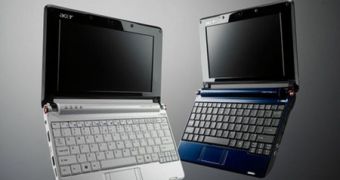Despite reports earlier this week that Acer was planning to launch netbooks running on the increasingly popular Android operating system, the leading netbook vendor will reportedly introduce Android netbooks that will also ship with Windows. The dual-operating system scenario is more convenient for the PC vendor, given the uncertainty around the success level of Android as a netbook OS. The company's chairman, JT Wang, announced that its upcoming Android netbooks would also be featured with a Windows OS, which means that the presumably lower price tag of the upcoming machines no longer applies.
Earlier this week, during the opening of this year's Computex edition, Acer announced bold plans to introduce Android as an operating system for some of its next-generation netbook systems. The announcement was made following reports earlier this year that the company was already testing Android on its current netbook systems in the eventuality of releasing future Android-running netbooks. The situation has now been clarified by Acer's chairman JT Wang, who explained that the upcoming Android netbooks would be shipped with both Android and Windows OS.
According to a recent report on Digitimes, Acer's strategy is a more precocious one, as there's no way of telling whether these Android-based netbooks will be as successful as current Windows-based netbooks. However, Wang further noted that in case of market demand, Android-only netbooks would be introduced at a later date, leaving an open door for an upcoming wave of Linux-based netbook systems.
During Computex, Acer demonstrated an early sample of one of its Android netbooks, which was largely based on a current model that was featured with the aforementioned OS. However, the next wave of Acer netbooks might sport a new design and the dual-OS configuration mentioned earlier.
In related news, Acer's chairman also estimated that the company's notebook shipments for the second half of 2009 would grow about 30-40%, in comparison to Q1.

 14 DAY TRIAL //
14 DAY TRIAL //